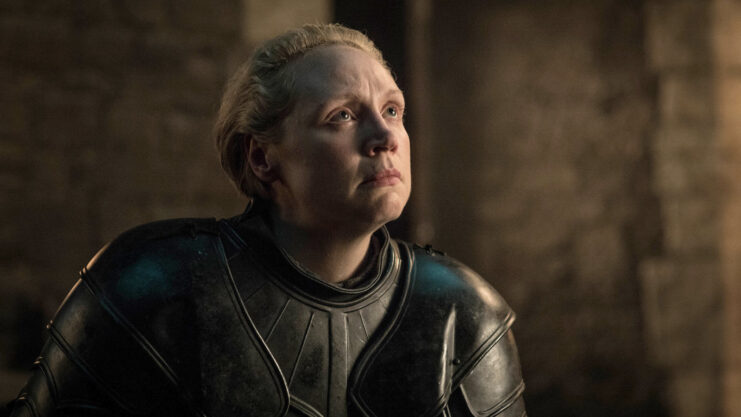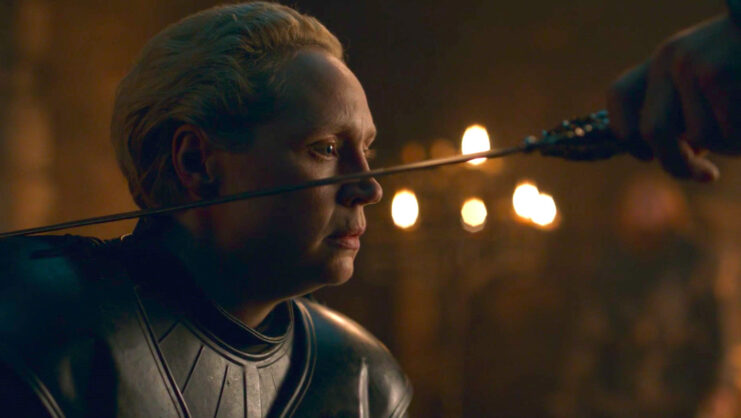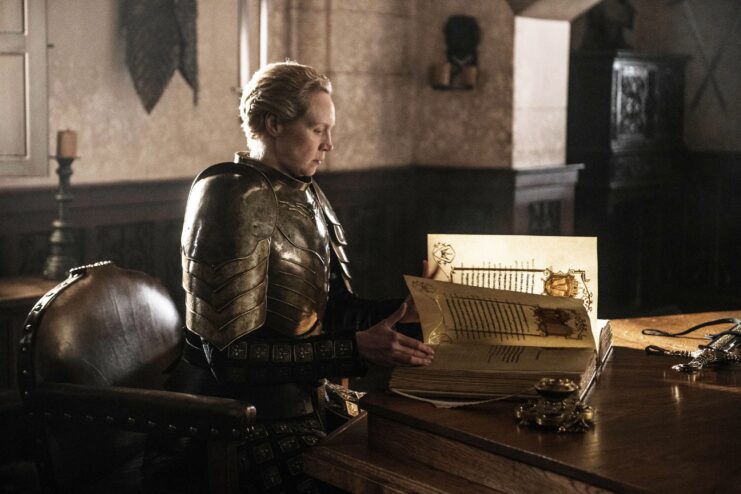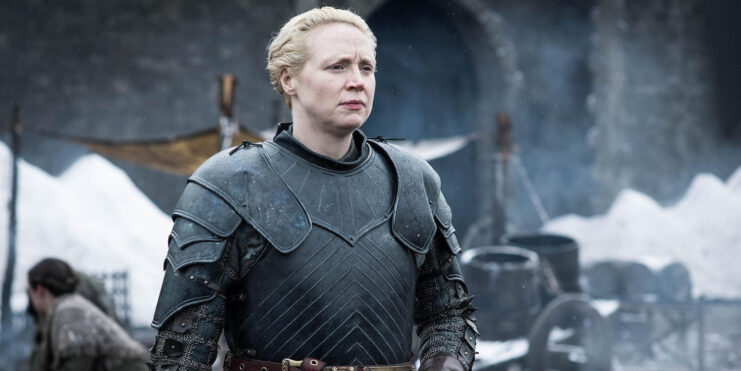Pride Month may have come to a close, but Laura Venning continues our coverage of LGBTQ+ representation in film and TV; this time looking at queer coding in one of Game of Thrones’ most iconic characters.
Ten years ago, during the long, languid summer between leaving school and starting university, I read George R.R. Martin’s A Song of Ice and Fire series.
The first season had already aired, but the pop cultural reign of Game of Thrones was still but a twinkle in HBO’s eye. I was painfully shy, and my obsession with Harry Potter had been my primary outlet for pent-up adolescent emotion. Summer 2011 felt like the end of an era, as the final Potter film hit cinemas just as I was embarking on the next chapter of my life. I needed something new to cling to.

I was immediately taken with Brienne of Tarth when I reached her first appearance in the second book in the series, and even more so when Gwendoline Christie brought her to life on-screen. The saga may be infamously stuffed with characters, but Brienne stood out. At over six feet tall and clad in armor, with cropped blonde hair and a deep voice, Brienne was a gender-non-conforming breath of fresh air. I adored her, and it was a joy to spend the first half of my twenties muddling through life (and love) with her.
In a post-Buffy The Vampire Slayer and Xena: Warrior Princess TV landscape, a woman warrior wasn’t exactly revolutionary. But these characters didn’t often deviate from conventional feminine beauty standards: hair was long, clothes were tight, lips were glossed. And while there’s nothing inherently wrong with that, it felt as if there was a fear steeped in homophobia of these women appearing ‘too butch’.
Physical strength had to be counterbalanced by a narrow interpretation of attractiveness, or else audiences might suspect that something queer was afoot – even armor was shaped to accentuate the curve of breasts and hips.

Brienne felt different because not only is she defiantly non-conforming, she is allowed to remain so. Unglamorous heroines are so often softened by makeovers; although her emotional growth is radical her appearance never really changes. When Roose Bolton briefly holds Brienne and Jaime captive in season three, he forces her into a pink dress, which is framed as nothing other than a cruel show of dominance. It’s not a transformational moment when Jaime feels reluctantly attracted to her for the first time; he seems to feel for her humiliation just as much as I did.
Brienne is certainly not explicitly queer in either the books or the TV series. Her only romantic relationships (a naive unrequited crush on Renly Baratheon and her more complex partnership with Jaime Lannister) are with men. While she presents herself in the style of the men of Westeros, she doesn’t clearly express a desire to live as one.
LGBTQ+ representation is, of course, vital but I actually found more kinship in Brienne than through the brief glimpses of obviously queer female characters like Yara Greyjoy. Brienne is laughed at, dismissed and shamed by the pseudo-medieval society she lives in for daring to reject femininity. As I’m sure it is with virtually all queer women, my appearance is an ongoing, experimental unraveling of an inner tangle.
Do I subconsciously care too much about what men think of me? How do I signal my queerness without feeling like I have to wear a uniform? Is it somehow obvious enough already from my mannerisms? Does it matter if it isn’t obvious? I broadly conform to feminine convention: I wear a little bit of makeup, sometimes skirts and dresses, but seeing a character turn away from the performance of traditional femininity, and warmly embraced by mainstream audiences for it, gives me courage.
And then, of course, there’s Brienne’s yearning for what and whom she cannot have. When we first meet her she is hopelessly devoted to Renly: a gay man who was kind to her as a fellow outcast. I think the agony, but relative safety, of loving someone who will never, ever return those feelings is a relatable experience for many queer people. Her love for Jaime, however, challenges and changes her like nothing else. Their relationship shakes the foundation of her sense of self, shatters her naivety and makes her feel truly loved for the first time.
Yet their romance is laughable to others, seemingly a subconscious fantasy for her, and a surprise to him. It’s between a man and a woman, but it sounds a lot like queer first love to me.

Brienne is admittedly a late bloomer, repressing her vulnerability to armour herself against the world. She only begins to find a sense of peace and comfort within herself when she dares to express her true desires and let others see who she really is.
As a queer woman, I see myself profoundly in her story.

